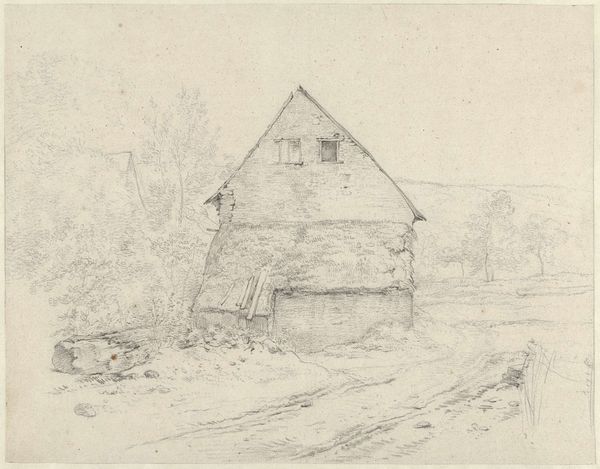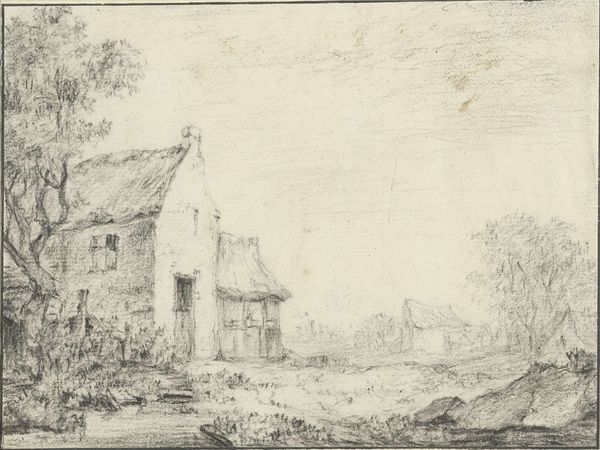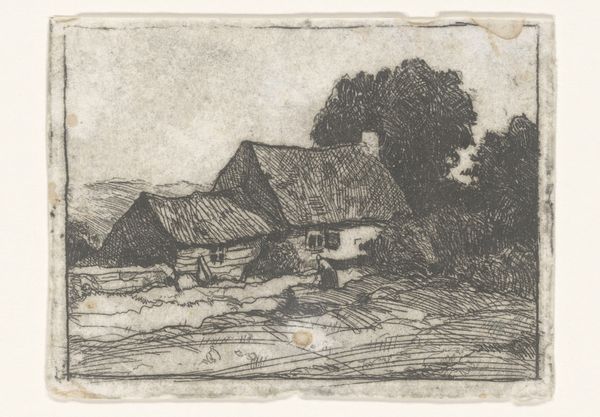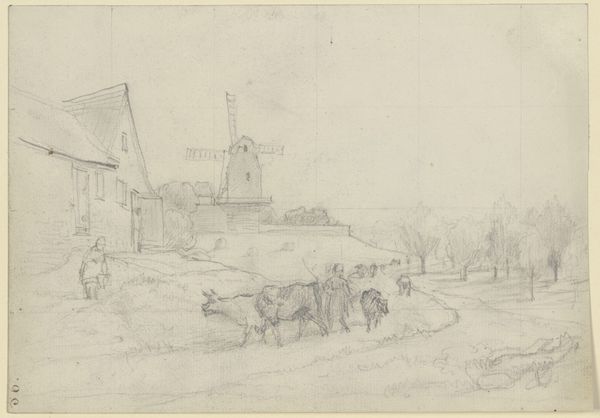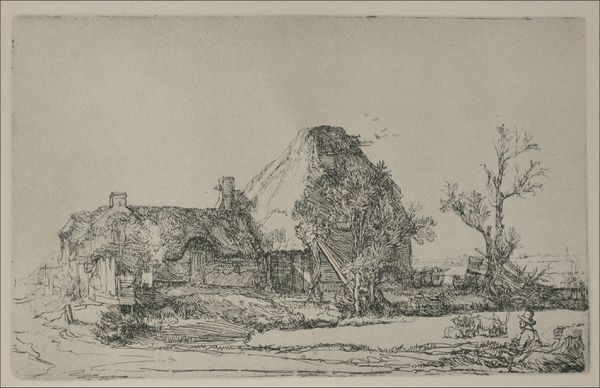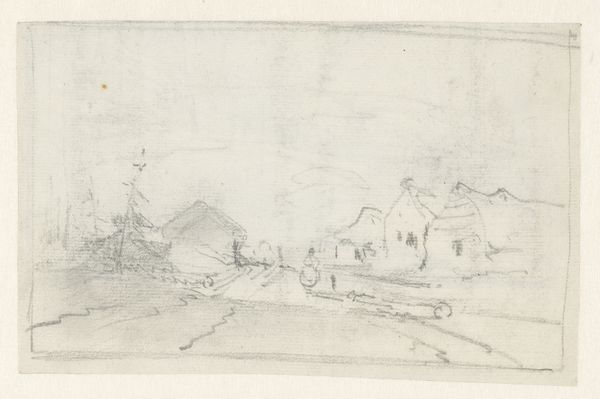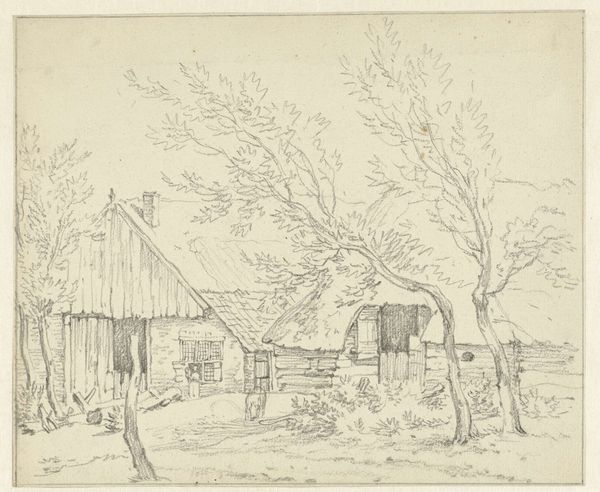
drawing, plein-air, pencil
#
drawing
#
plein-air
#
pencil sketch
#
landscape
#
romanticism
#
pencil
#
realism
Dimensions: 7 1/8 x 9 7/8 in. (18.1 x 25.1 cm)
Copyright: Public Domain
Curator: This pencil drawing, titled "Farmyard in Normandy," was created sometime between 1826 and 1836 by Théodore Rousseau. It resides here at the Metropolitan Museum of Art. My first impression is that this rustic scene possesses an odd beauty, despite its worn buildings. Editor: There is a real sense of faded grandeur here. Rousseau, clearly working en plein air, has rendered these farm structures in great detail with pencil, the roof showing timbers almost falling down. The materials are palpable – wood, stone, the dust of the road. Curator: Indeed, there's a pervasive symbolism of transience. Notice how the ruined barn stands adjacent to a tall silo, suggesting both traditional agricultural life giving way to more industrial methods, a transformation embodied in architecture. What does the presence of broken-down equipment evoke for you? Editor: The discarded machinery really speaks to changing rural economies. Consider the work, the human effort represented and no longer needed here. Rousseau captured the way agricultural labor and local craftsmanship intersect. The rough, almost chaotic strokes hint at the difficult existence that built that reality, reflecting Romanticism's fascination with natural processes. Curator: You have touched on the core ideas. This particular kind of Romanticism involves facing modern realities squarely rather than escaping to fantasy. His precise rendering and observation suggest fidelity, a desire to document the changing landscape of Normandy and how that farm stood against those transformations. Editor: To see the Romantic impulse manifesting itself in documentation of labor and in realism truly grounds the imagination. And you can actually imagine yourself in this French farm with Rousseau! Curator: Yes, that sense of intimacy with nature and everyday life distinguishes his approach. We appreciate him recording these soon-to-disappear monuments of agriculture as they faced transformations during industrialization. Editor: Exactly, documenting the landscape's labor. It transforms how we remember cultural histories and how places affect those experiences. Curator: Beautifully said, offering so much meaning to this rustic vision. Editor: Likewise! Let’s move on!
Comments
No comments
Be the first to comment and join the conversation on the ultimate creative platform.
